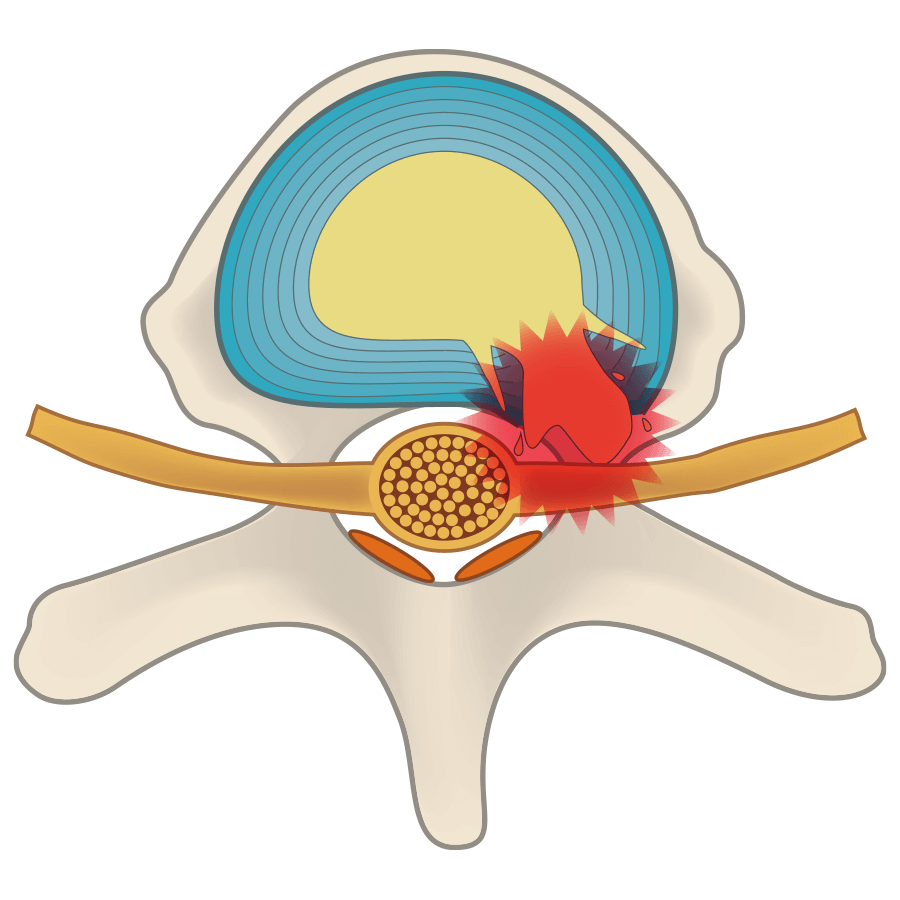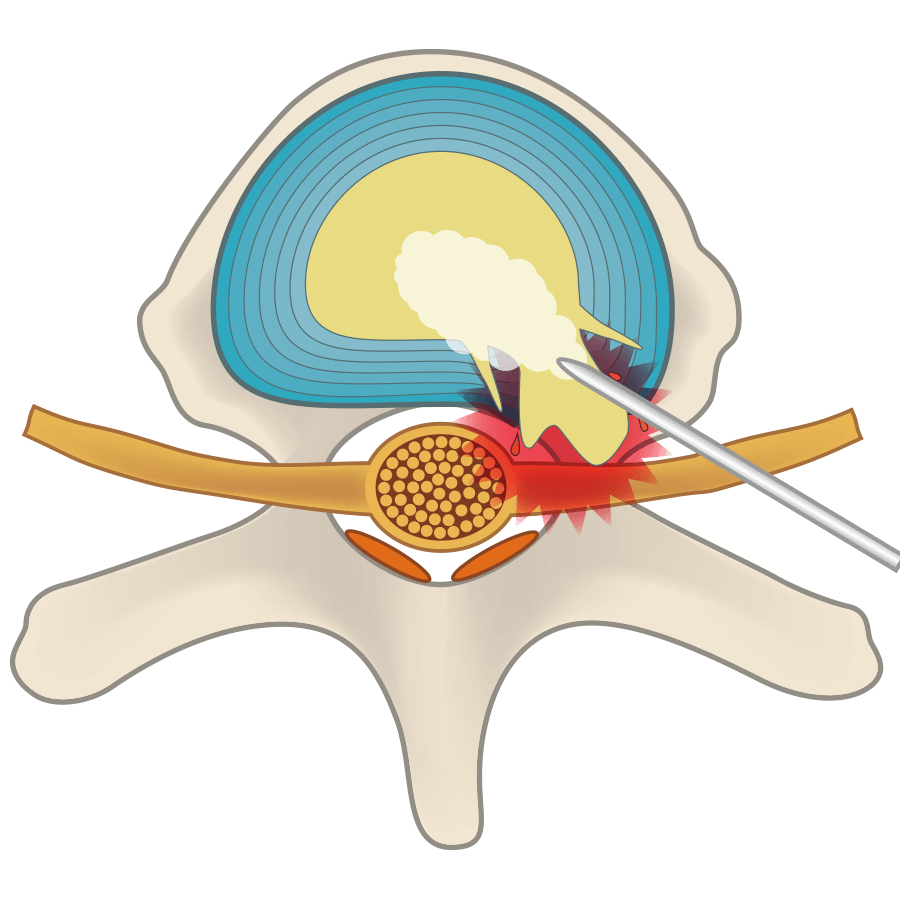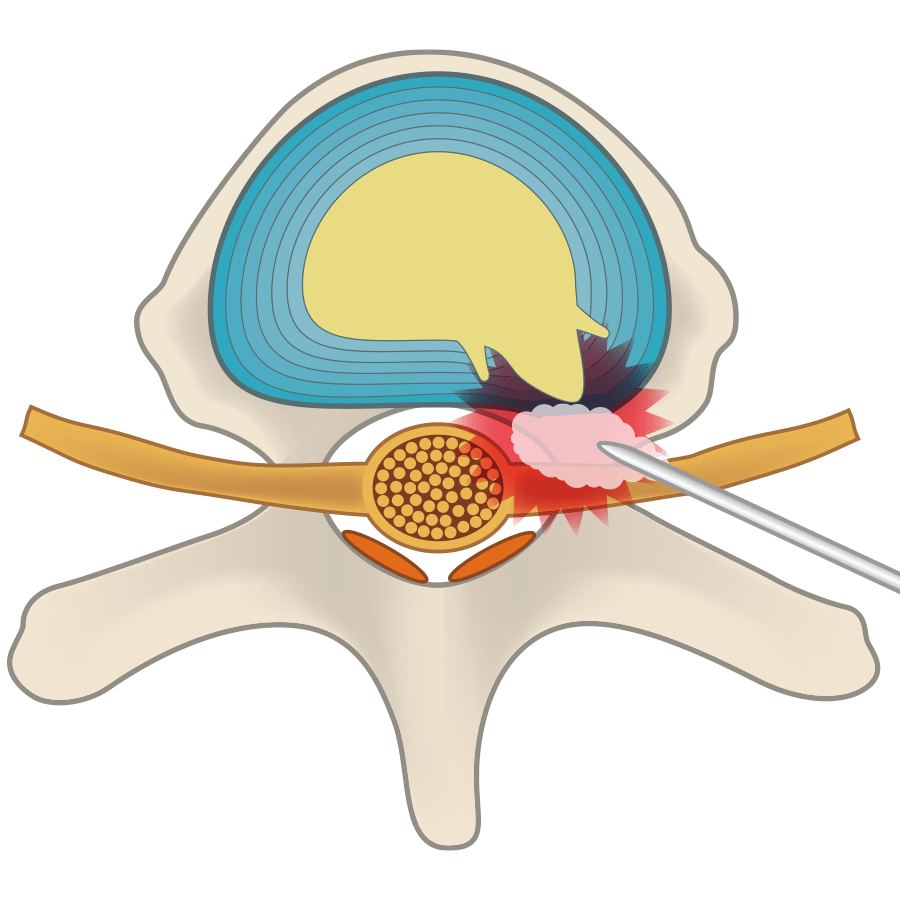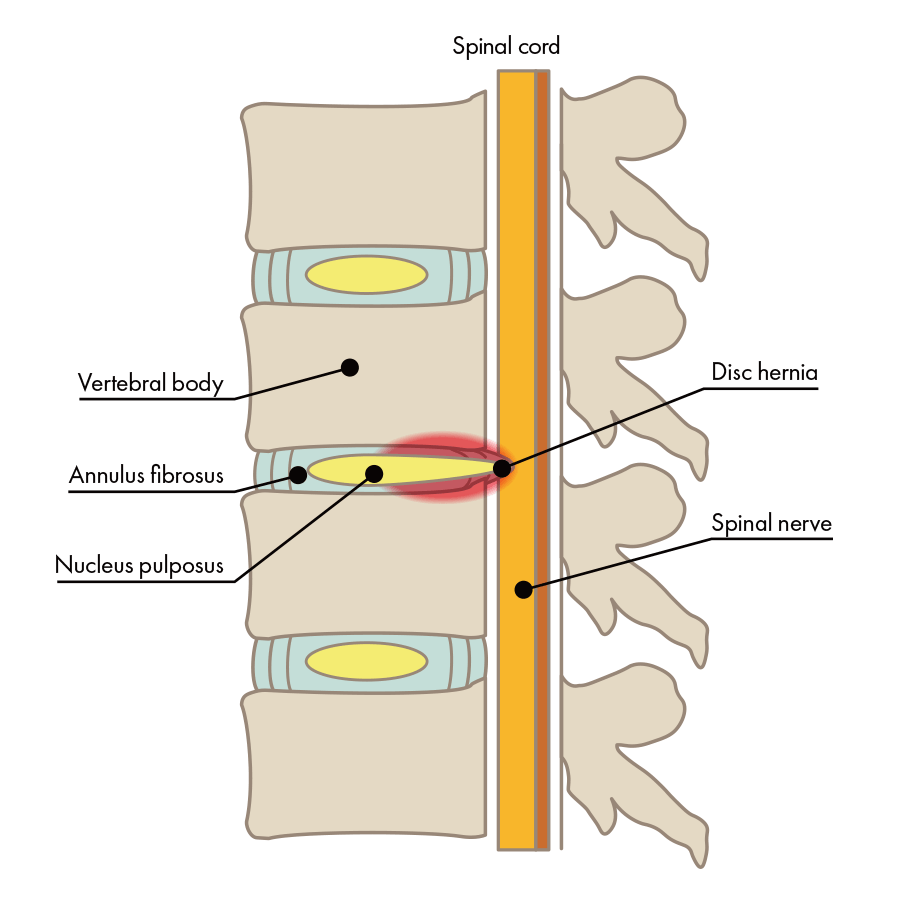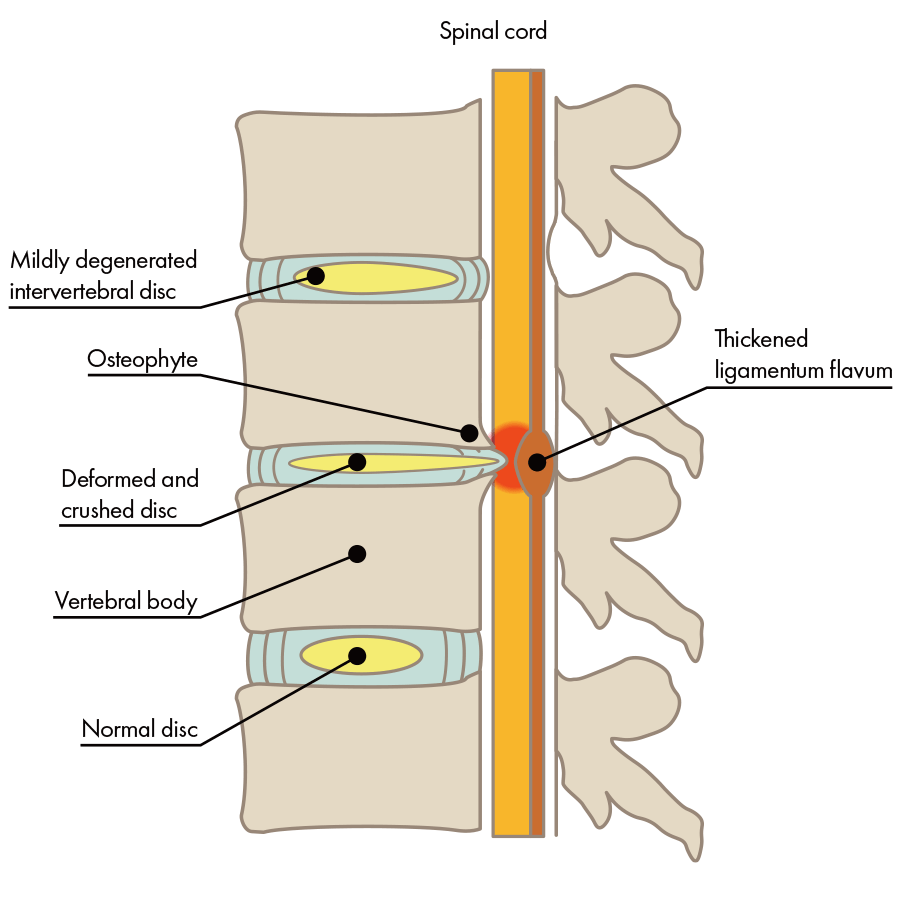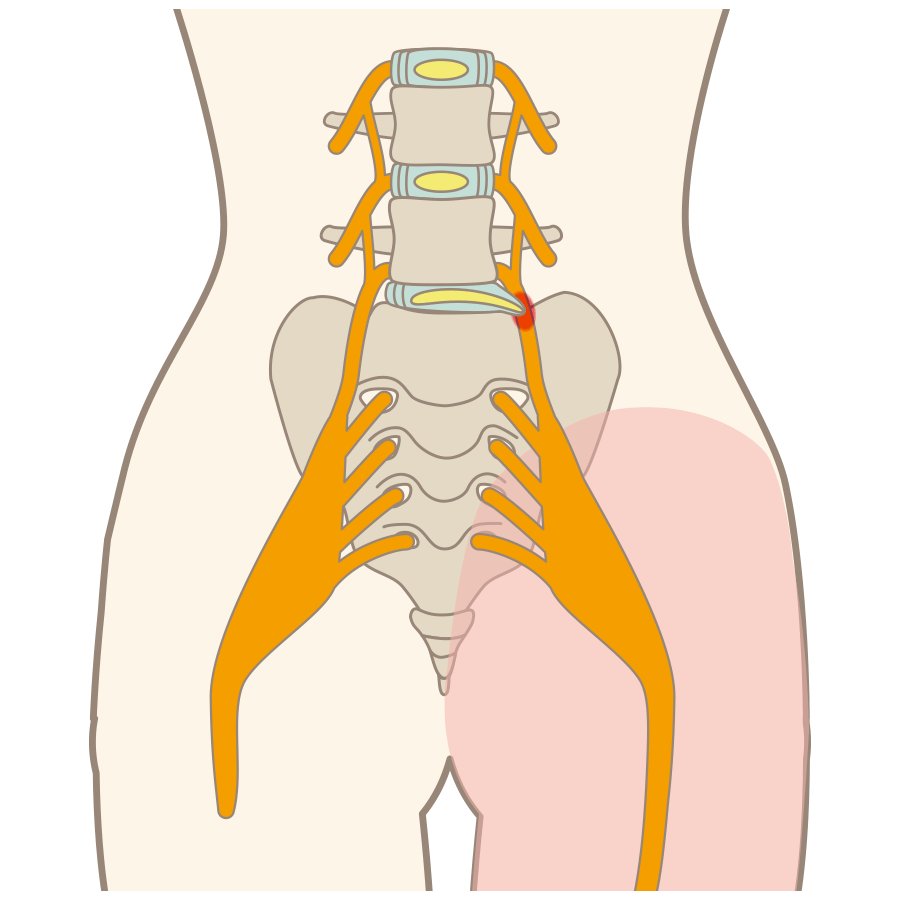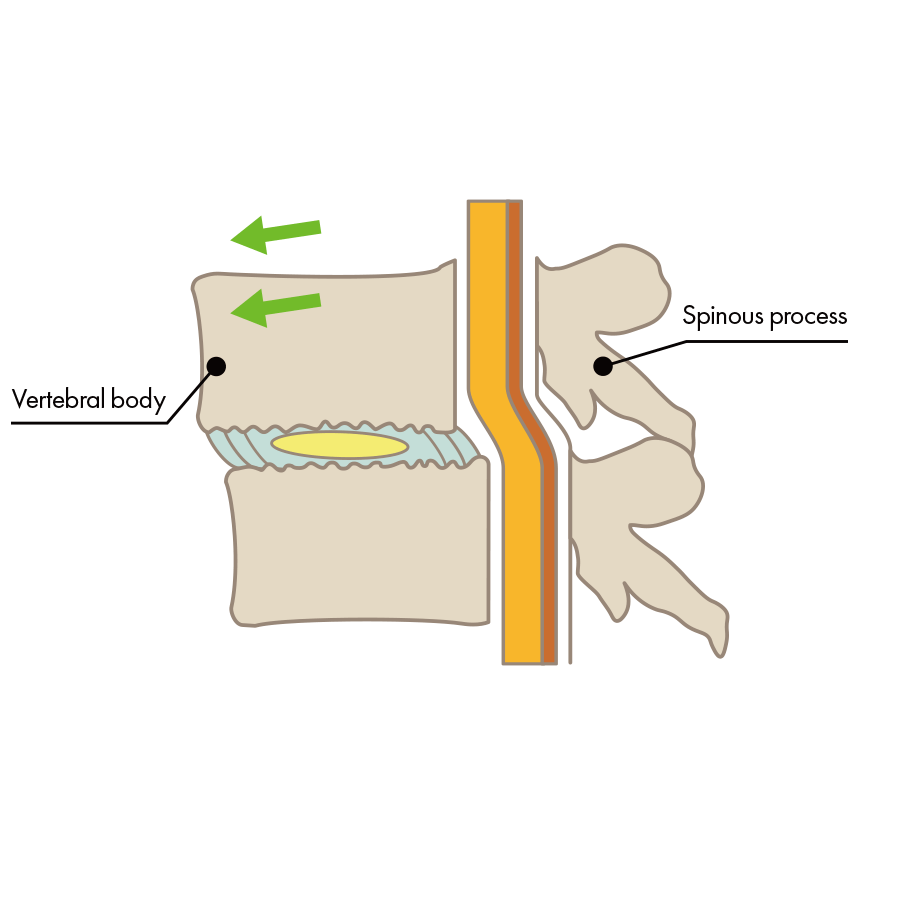The PODT Method (Ozone)/ Treatment Overview
What the PODT Method Is
Percutaneous Ozone Disc Treatment
PODT is a method that improves low back pain due to discitis or herniated discs or nerve pain due to spinal stenosis by using a 0.8 mm puncture needle to inject ozone into the intervertebral disc’s nucleus pulposus. We cannot say that the particulars of ozone’s anti-inflammatory effect have been elucidated, but it is thought that, by stimulating the inside of the body, ozone treatment intentionally produces a strong immune response and puts an end in a short time to any inflammation that has occurred. The ozone itself is only injected inside the intervertebral disc, but the treatable conditions are not confined to herniated discs: the treatment is also effective for spinal stenosis or vertebral canal stenosis. The reason is believed to be that the ozone injected into the intervertebral disc passes through the damaged disc and permeates surrounding tissue.
With the patient under local anesthesia, and while using an X-ray fluoroscope, we safely place a 0.8 mm puncture needle into the intervertebral disc. After that, we inject ozone in proportion to the state of the damage. We finish by checking with the X-ray fluoroscope whether ozone has permeated into and outside of the intervertebral disc.
Treatable Conditions
Treatable Conditions
- Disc Herniation
- Spinal Stenosis
- Intervertebral Disc Degeneration
Who can be a candidate for the treatment?
- Those diagnosed with herniated discs, spinal stenosis, or intervertebral disc degeneration.
- Those suffering from chronic low back pain caused by herniated discs, spinal stenosis, or intervertebral disc degeneration.
- Those considering surgery for herniated discs, spinal stenosis, or intervertebral disc degeneration but who do not want to undergo surgery.
- Those who have undergone herniated disc surgery but not improved (or whose condition has recurred).
- Those afraid of surgery for herniated discs, spinal stenosis, or intervertebral disc degeneration.
- Those who do not want to be hospitalized for surgery for herniated discs, spinal stenosis, or intervertebral disc degeneration.
- Those hoping for treatment for herniated discs, spinal stenosis, or intervertebral disc degeneration that takes less of a toll on the body.
We can also treat elderly patients ( 80 years or above ).
The Benefits of PODT Method

Almost No Scar Will Be Left
Since only a small needle is inserted without making an incision, almost no scar will be left.
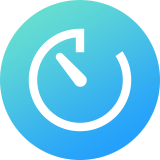
Outpatient Treatment That Takes Less of a Toll
PODT is a treatment that is even less invasive (takes less of a toll on the body) than PLDD. Treatment takes about 15 minutes, and you will need to rest for about 60 minutes afterwards. You can go home in about 90 minutes.

No Need for Continued Hospital Visits or Rehabilitation
Because no continued hospital visits or rehabilitation is necessary after treatment, it’s easy even for those who come from far away to return to their daily lives and work.
How Treatment Is Done and Treatable Conditions
PODT stands for “percutaneous ozone disc decompression.” It is a treatment in which, using X-ray fluoroscopy from the back, we pierce into the intervertebral disc with a 0.8 mm puncture needle and inject ozone from the tip of the inserted needle. The treatment removes the part that is the root cause of pain by injecting ozone into the protruding intervertebral disc (its nucleus pulposus) and shrinking the protruding nucleus pulposus by means of ozone oxidation. In addition, PODT treatment is possible even in cases when PLDD treatment or PLOT treatment is not suitable.
-

- Disc herniation causing inflammation of the compressed nerve.
-

- Ozone is injected through the tip of the inserted needle.
-

- As a result, the volume of the herniated disc is decreased by means of ozone oxidation, and pressure on the nerves is reduced.
Efficacy of the Method for Disc Herniation
The PODT Method takes less of a toll when compared with surgery, PLDD treatment, or PLOT treatment, and it is one effective treatment method for mild to moderate herniation for which surgery is not indicated. Furthermore, because ozone has an anti-inflammatory effect, it is also an effective treatment for pain from inflammation. At our clinic, we have a lineup of treatments—PLDD, PODT, PLOT and Discseel® Procedure —to suit your symptoms and situation. We therefore only perform PODT treatment when it has been determined that it will be highly effective.
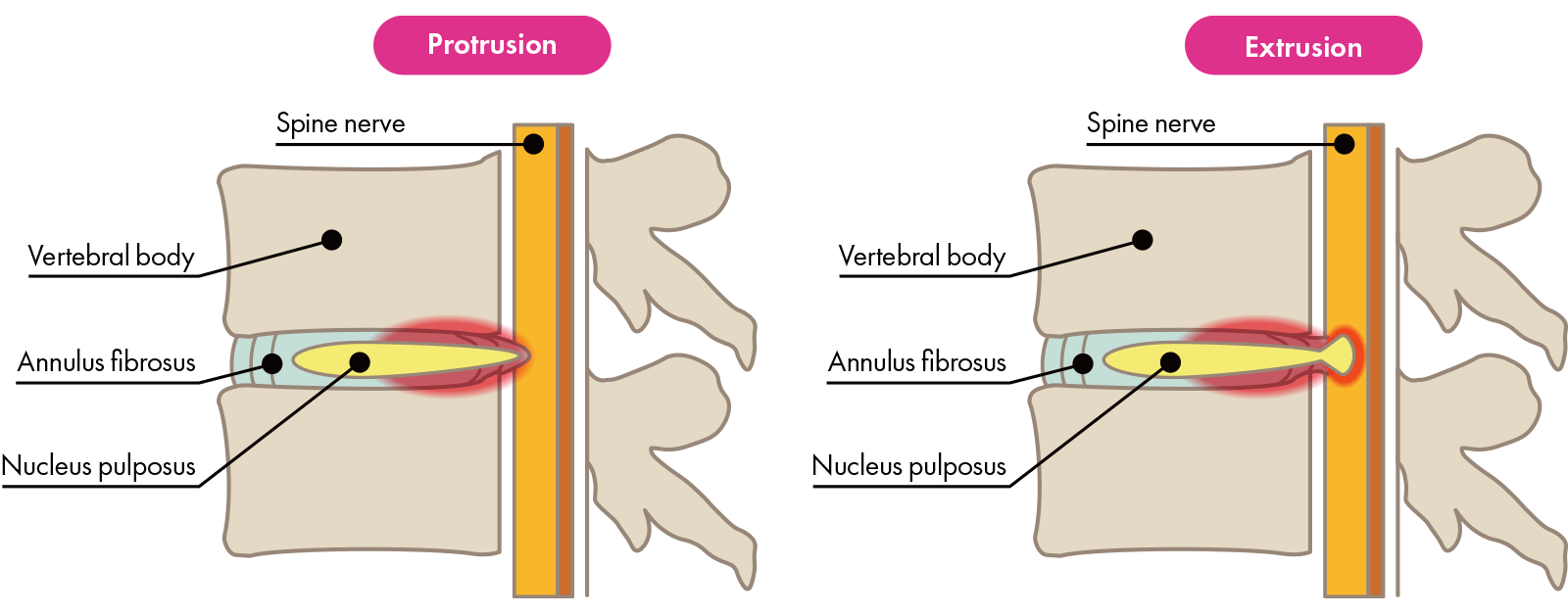
Treatment Time
- Treatment
Time - approx. 15 minutes
You will need to rest for about 60 minutes after treatment, and it will be about 90 minutes until you can go home. Light activity can be done the following day, but you will need to postpone sports or heavy labor for around 7 days.
Post-Treatment Issues
About Post-Treatment Issues
The problem is that the recurrence rate is said to be equally as high as with conventional surgery. That is because intervertebral disc damage cannot be improved as with Discseel® Procedure.
About Side Effects
There are no reports of nerve damage among our own cases or in articles. However, there is an extremely slight, but existent, possibility of an allergic reaction to the local anesthetic.
Physical Activity Guidelines After the Treatment
Since treatment is performed on an outpatient basis, patients can return to their daily life from the very next day after undergoing the procedure and are encouraged to walk and exercise as possible. However, it is advisable to temporarily refrain from the following exercises and daily activities.
| Exercises and daily life activities that can be done after the treatment |
Period of restriction |
|---|---|
| Disposable body warmer | Same day |
| Cycling | 1 day |
| Sauna | 3 days |
| Bathing | 3 days |
| Pool Walking | 3 days |
| Going to the gym | 7 days |
| Massage | 7 days |
| Nerve block procedure | 7 days |
| Rehabilitation | 7 days |
| Yoga | 14 days |
| Chiropractic adjustment | 14 days |
| Sportbike riding | 14 days |
| Acupuncture | 14 days |
| Golf | 30 days |
* We recommend that you wait for at least 30 days before taking a golf round.
Treatment Costs for the PODT Treatment
| Disc | 1 disc | 2 discs | 3 discs | 4 discs |
|---|---|---|---|---|
| Cost of Treatment | 330,000(JPY) | 385,000(JPY) | 440,000(JPY) | 495,000(JPY) |
Notes
*Consultation, diagnosis, MRI and other tests are all included in the treatment costs listed above.
*Since the treatment is not covered by the Japanese health insurance, the patient must bear the entire cost of the treatment.
*We accept payments by credit card and cash in Japanese Yen (JPY).
*All taxes included.
The PODT Method: FAQ
-
- Q
-
What are the differences between PLDD and PODT?
- A
-
Both the PLDD and PODT methods are used to treat herniated discs, but their mechanism of action is different. The PLDD method reduces internal disc pressure by ablation and vaporization of a small amount of tissue from the nucleus pulposus, while the PODT method shrinks the disc by oxidizing the nucleus pulposus with ozone. The PODT method is also expected to be effective for spinal canal stenosis and degenerative disc disease.
-
- Q
-
In what cases is Ozone treatment indicated?
- A
-
It may be indicated when the internal pressure of the intervertebral disc is high and ongoing chronic inflammation is observed.
-
- Q
-
Is it safe to exercise after undergoing the treatment?
- A
-
You can start with light exercises one week after the treatment, however, if there is severe postoperative pain, please refrain from sports and strenuous exercise. It is recommended to begin with light walking and stretching.
-
- Q
-
How long does it take for the inflammation to go away after treatment?
- A
-
Although there are individual differences, inflammation may subside within a week after treatment at the earliest, but in some cases it may take up to a month.
Treatment Overview
The Discseel
Discseel® Procedure
Discseel® Procedure was developed by an American surgeon by the name of Dr. Kevin Pauza, after caring for hundreds of patients who were made worse following their spine surgery. The treatment aims to seal tears in herniated vertebral discs and help them regenerate and recover their, allowing permanent relief of back pain. Dr. Pauza holds a series of 16 patents for a device and Discseel® biologic that support the treatment. Dr.Nonaka has been licensed to perform the Discseel® Procedure in 2018, and more than 2,880 patient have undergone the treatment in our clinic since then. At present, approximately 20 doctors, including physicians from Harvard and Boston Universities are using the Discseel® Procedure to treat their patients in the USA. Dr. Nonaka is the first physician trained to perform the Discseel® Procedure in Japan.

-
The PLOT Method
(Laser And Ozone)Percutaneous Laser and Ozone Treatment

-
The PODT Method
(Ozone)Percutaneous Ozone Disc
Treatment
-
The PLDD Method
(Laser)Percutaneous Laser Disc
Decompression
Targeted Conditions
-
Disc Herniation

-
Spinal Canal Stenosis

-
Sciatica

-
Spondylolisthesis

-
Disc Degeneration

-
Lumbar Spondylosis

- HOME/
- Treatment Overview/
- The PODT Method (Ozone)

